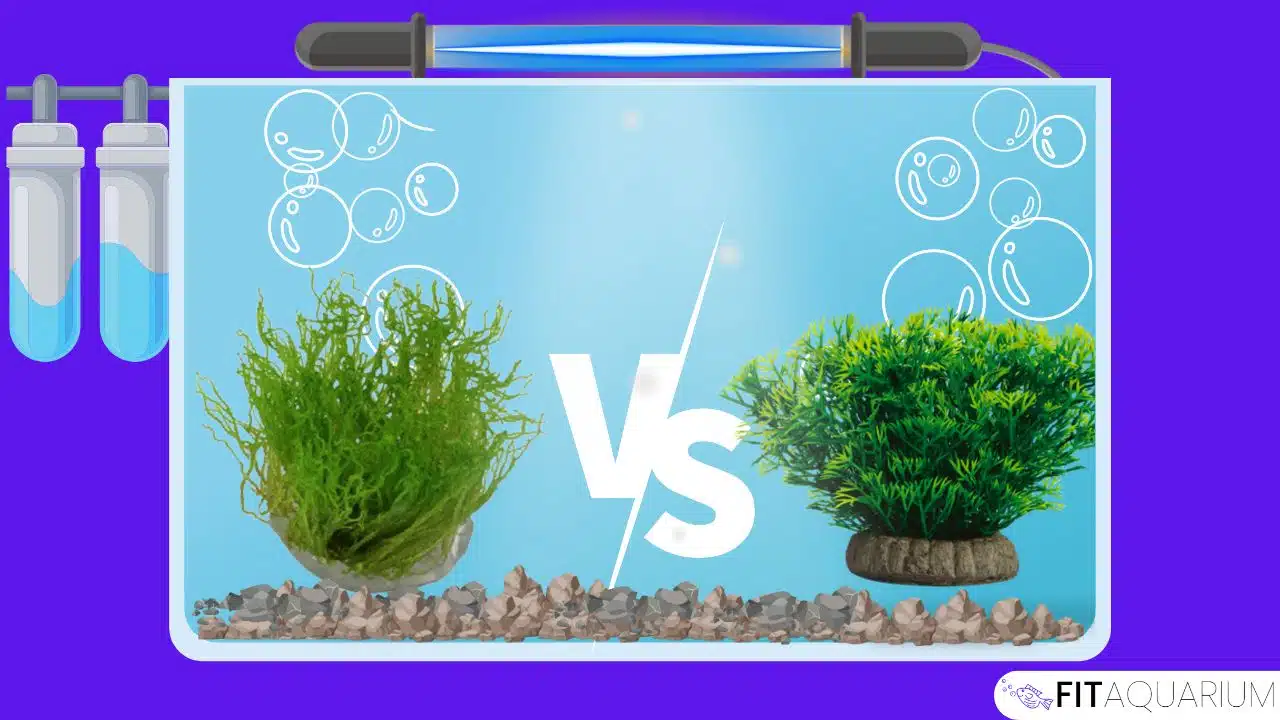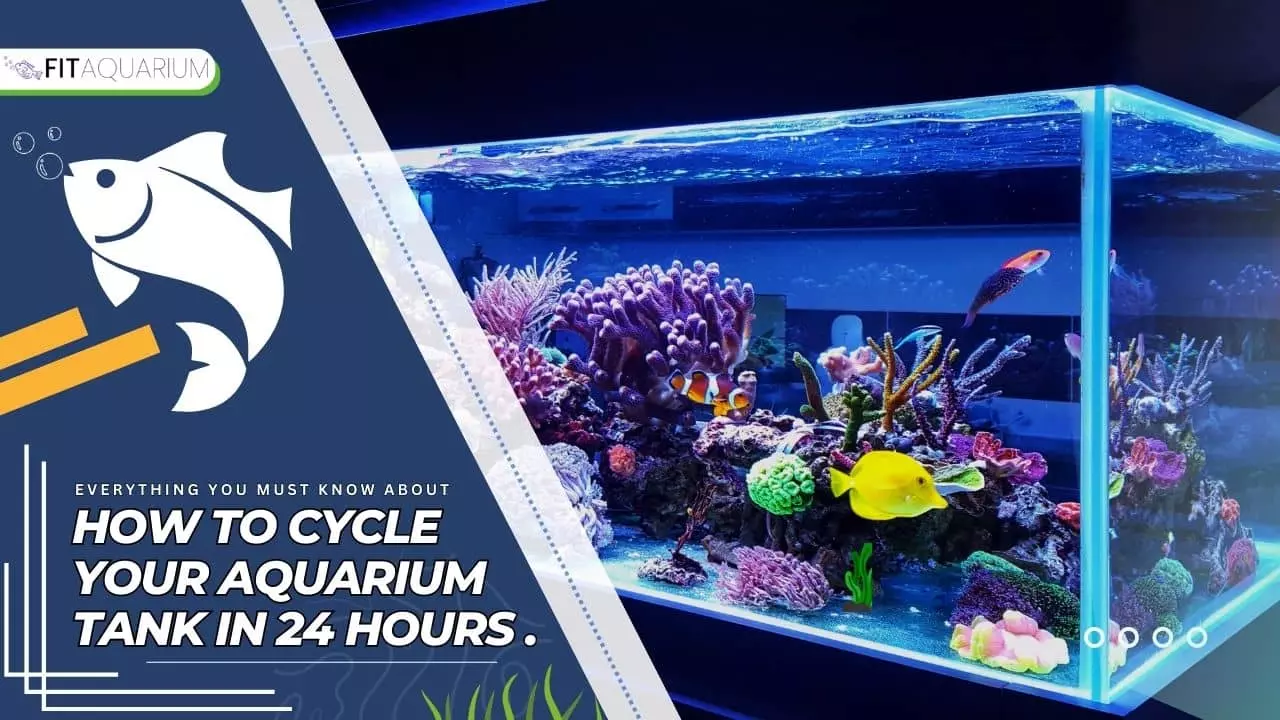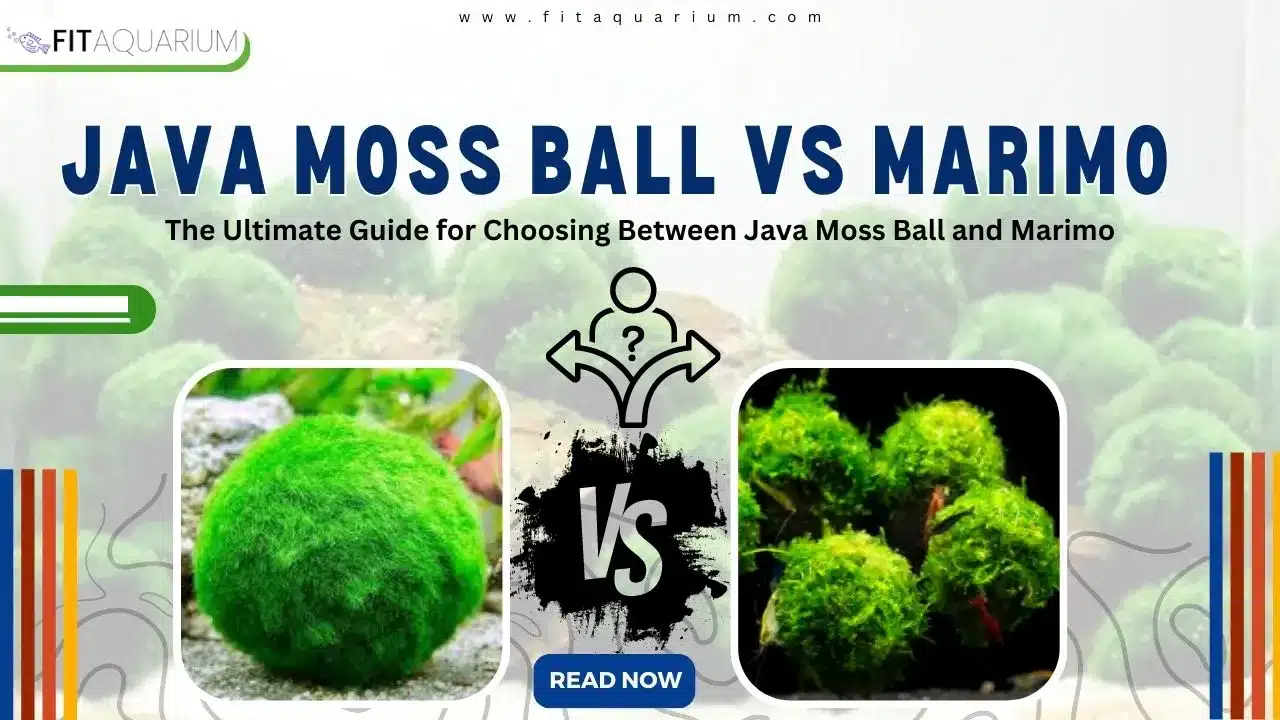Are you deliberating between Christmas Moss vs Java Moss for your aquarium? This concise guide delves into the nuances of these two popular aquatic plants, aiding you in selecting the ideal greenery for your underwater haven.
Understand the benefits and drawbacks of both java moss and Christmas moss and make an educated decision for your fish tank today!
Table of Contents
Quick Pick
For you to get a quick idea, I’ll suggest you to go for Java Moss.
Best Value
Java Moss
- Rapid Growing
- Best for Carpeting
- Best for Aquascaping
Disclaimer: The images used for products are fetched from Amazon. All rights reserved to Amazon
What Are Aquatic Mosses?
Aquatic mosses or aquarium mosses are a popular choice for aquarium and fish tank enthusiasts due to their fast and easy growth in various environments. They lack genuine roots, stems, and leaves but have rhizoids that anchor them to surfaces and absorb nutrition.
Apart from providing a natural habitat for small aquatic organisms, these mosses also help to absorb nutrients that are excessive in the water, reducing the risk of algal blooms.
Popular Aquatic plants include Christmas Moss (Vesicularia Montagnei), Java Moss (Taxiphyllum Barbieri) and Flame Moss (Taxiphyllum Sp.) each with unique growth rates, textures, and colors, making them suitable for community tanks. With proper care and maintenance, they can enhance the aesthetics and health of any aquatic habitat.
This guide will explore the differences between Christmas Moss and Java Moss to help you make an informed decision for your aquatic environment.
Benefits of Aquatic Mosses
Aquatic mosses are not only attractive, but they also provide various advantages to aquatic habitats.
The following are some of the advantages of having aquatic moss in your fish tank:
1. Oxygenation
During photosynthesis, they emit oxygen, which can assist in boosting oxygen levels in the water. This is especially vital for fish and other aquatic species that need a lot of oxygen to live.
2. Filtration
They can serve as natural filters, removing extra nutrients and trash from the water. This can assist in keeping harmful bacteria and other organisms at bay in the tank.
3. Habitat
They serve as a natural habitat for fish and other aquatic species, providing them with refuge and hiding places to relax and lay eggs.
4. Aesthetics
They give a lush green hue and soft texture to any aquarium, bringing a lush green color and delicate texture to the tank. They can also aid in the creation of a natural-looking environment for your fish and other aquatic inhabitants.
Aquarium mosses could be used to develop moss walls, carpets, moss trees, and caves.
5. Minimal maintenance
Unlike some other plants, aquatic mosses require little upkeep, making them an excellent choice for new aquarists or those looking for low-maintenance solutions.
![Christmas Moss Vs Java Moss [Choosing The Best One] Benefits of aquarium mosses](https://fitaquarium.com/wp-content/uploads/2023/03/Benefits-of-Aquarium-Mosses.webp)
Also Read: 15 Amazing Java Moss Benefits [Along with Precautions to consider]
Rapid Coparison
| Image | Product | Price |
|---|---|---|
![Christmas Moss Vs Java Moss [Choosing The Best One] Java moss](https://fitaquarium.com/wp-content/uploads/2022/12/Java-Moss-Product.webp) | Java MossRapid Growing
| Check Price on Amazon |
![Christmas Moss Vs Java Moss [Choosing The Best One] Christmas moss](https://fitaquarium.com/wp-content/uploads/2023/03/Christmas-moss-product.webp) | Christmas MossAppealing Texture
| Check Price on Amazon |
Disclaimer: The images used for products are fetched from Amazon. All rights reserved to Amazon
All about Christmas Moss
Christmas moss is a well-known aquatic plant native to Southeast Asia. It is bright green in color and can reach a height of 3 inches. Christmas moss is a slow-growing delicate plant that might take months to develop a dense carpet.
![Christmas Moss Vs Java Moss [Choosing The Best One] Christmas moss overview](https://fitaquarium.com/wp-content/uploads/2023/03/Christmas-Moss-Overview.webp)
Christmas moss is a hardy plant that can survive in a variety of water conditions, including Very little light, low CO2, and low nutrition levels. It’s also great for providing shelter and hiding spots for little fish and insects.
If you’re looking to share your expertise on caring for Christmas moss, consider creating informative videos showcasing its resilience and benefits in diverse aquatic environments. Skillful video editing can help highlight the plant’s features, growth patterns, and its role in creating a thriving ecosystem within aquariums, making your content visually appealing and educational for fellow enthusiasts.
Appearance Christmas moss
Christmas Moss has a distinctive appearance, with small, brilliant green triangular leaves (just like fir trees) that grow in a cluster. The spiral design of the leaves gives the plant a distinct and eye-catching appearance.
Christmas moss adheres to rocks, driftwood, and other surfaces, resulting in a natural and visually appealing aquatic environment.
Christmas moss grows to develop a dense, lush carpet, providing hiding places for fish and other aquatic organisms as well as an ideal environment for beneficial bacteria to inhabit.
Overall, Christmas Moss gives a lovely and natural touch to any aquarium or aquatic garden.
Growth rate Christmas Moss
The growth rate of Christmas moss is known to be slow to the medium grower, but it is still a desirable aquatic plant for many aquarists due to its ease of replication.
Despite its slow growth rate, Christmas moss is adaptable to various aquarium setups and can thrive in a range of water conditions.
Using the fragmentation method is a great way to speed up the growth rate of Christmas moss in an aquarium. Simply cut a small piece and attach it to a rock or driftwood using string or fishing line.
With time, the attached fragment of Christmas moss will cling to the surface and begin to grow, eventually forming a new patch of moss. This process can be repeated as often as necessary to increase the growth rate of Christmas moss in an aquarium.
Maintenance and Care
Christmas moss is a well-known aquarium plant due to its delicate, branching structure and vivid green hue. If you want to add Christmas moss to your tank, you should know how to properly care for it so that it stays healthy and looks its best.
Water Conditions
Christmas moss prefers a pH range of 6.0-7.5, soft to moderately hard water, and temperatures ranging from 68-82°F (20-28°C). It can thrive in low light circumstances as well but prefers moderate to high lighting.
Christmas moss is a versatile moss that can survive in a variety of water conditions and requires little upkeep.
Planting and Propagation
Using fishing lines or glue, hang Christmas moss to rocks, driftwood, or other aquarium decorations. It can also be left adrift in the water.
Just cut a part of the Christmas moss and attach it to a new area to propagate the plant.
Maintenance
Constant upkeep is required to keep Christmas moss healthy and looking its best. This includes trimming the plant regularly to keep it from becoming too dense or overgrown, as well as eliminating any dead or discolored parts of the plant.
Cost and Availability
Christmas moss is a popular aquatic plant among aquascapes and aquarium lovers, and it is easily accessible on the market. The price of Christmas moss varies according to the provider and the size of the amount.
You can easily purchase it through the Amazon link provided below. Speaking from personal experience, I’ve procured from these vendors and received lush moss upon delivery.
Christmas Moss
![Christmas Moss Vs Java Moss [Choosing The Best One] Christmas moss product](https://fitaquarium.com/wp-content/uploads/2023/03/Christmas-moss-product.webp)
- Appealing Texture
- Simple to Maintain
Disclaimer: The images used for products are fetched from Amazon. All rights reserved to Amazon
Pros and Cons of Christmas Moss
Christmas moss, like any other aquatic plant, has both benefits and drawbacks. Here are some of the benefits and drawbacks of Christmas Moss:
Pros:
- Natural habitat and protection for water species.
- The aquarium creates a natural and appealing habitat.
- Adds a distinct and appealing texture to hardscape projects.
- Simple to maintain and spread.
- Can flourish in a variety of water conditions.
Cons:
- If not adequately handled, it can be invasive.
- If not properly clipped, it has the potential to take over other plants.
- To avoid debris buildup, it must be cleaned regularly.
- Christmas moss grows well with additional lighting only.
- Some aquarium occupants may not be suitable.
![Christmas Moss Vs Java Moss [Choosing The Best One] Christmas moss pros and cons](https://fitaquarium.com/wp-content/uploads/2023/03/Christmas-Moss-Pros-and-Cons.webp)
All about Java Moss
Another popular aquatic plant after Christmas moss in the aquarium hobby is Java moss. It is a bright green plant native to Southeast Asia. Java moss is a tough plant that can grow to be 10 inches long and produces a thick mat on the aquarium substrate or any other surface to which it is attached.
![Christmas Moss Vs Java Moss [Choosing The Best One] Java moss overview](https://fitaquarium.com/wp-content/uploads/2023/03/Java-Moss-Overview.webp)
Java moss is an ideal plant for novices since it is simple to care for and can withstand a variety of water conditions, including shallow light, low Carbon dioxide, and low nutrient levels.
It’s also a great plant for hiding spots and covering for little fish and insects.
Appearance of Java Moss
Java moss is a common form of aquatic moss found in freshwater aquariums and aqua capes. It is distinguished by small, fragile, and feathery fronds that grow in dense clusters. The fronds are a Bright green color with a unique, branching structure with a velvety texture that looks like miniature ferns.
Java moss grows to develop dense mats of foliage that lend a lush, natural appearance to aquariums and aquatic settings.
Its unique appearance has made it popular among aquarists and aqua capes alike.
Growth
Growing java moss is no doubt a quick and super easy process, making it a popular choice among aquarists. It may grow in a variety of environments, from low to high light, with or without additional CO2.
Furthermore, it can adhere to a variety of surfaces, including rocks, driftwood, and even gravel. Trimming and molding it to meet the desired aesthetic can simply regulate its growth. Java moss may quickly produce a thick and vivid carpet in your aquarium with proper maintenance.
Water Conditions for Java Moss
Java moss is a flexible and durable plant that can thrive in a variety of water conditions, making it a favorite option among aquarists. It can grow in both freshwater and brackish water and is temperature, pH, and water hardness tolerant.
The water should be well-circulated and oxygenated, with a pH of 5.0 to 8.0 and a temperature of 59°F to 86°F (15°C to 30°C).
While java moss may thrive in low light, it grows faster and more vibrantly under moderate to high light settings.
It also benefits from the presence of carbon dioxide in the water, which can promote faster and healthier growth.
Maintenance and Care
As Java Moss is a low-maintenance plant, it is ideal for novices or people who want low-effort aquatic settings.
Java Moss requires special care to ensure its healthy growth and longevity in your tank. Here are some recommendations for caring for Java Moss:
Lightning
Java Moss can grow in a variety of lighting conditions, making it a versatile plant. Moderate to high lighting, on the other hand, can promote faster growth and healthier foliage.
Water Quality
Although Java Moss can survive a wide range of water parameters, it favors slightly acidic to neutral water with a pH of 6.0 to 7.5. It can also withstand water flows ranging from low to moderate.
Nutritional Supplements
If grown in a nutrient-rich medium, Java Moss does not require further fertilizing. But, if planted on a rock or driftwood, fertilizing regularly can help it thrive.
Trimming and Cutting
Pruning Java Moss regularly is required to keep it in shape and prevent it from overgrowing. It can be trimmed with scissors or by pinching off excess growth.
Water Changes
Changing the water regularly can assist in maintaining the water quality and keep Java Moss healthy. Changing 20-30% of the water every week can help Java Moss.
By following these maintenance instructions, you may keep your Java Moss healthy and colorful in your aquarium for many years.
Cost and Availability
Java moss is a popular aquatic plant that is commonly available in pet stores and online retailers.
The same vendors (Marcus Fish Tank Store) are also providing Java Moss on Amazon. And they really never disappointed me with their lush green mosses. You can buy that from the button below.
Java Moss
![Christmas Moss Vs Java Moss [Choosing The Best One] Java moss product](https://fitaquarium.com/wp-content/uploads/2022/12/Java-Moss-Product.webp)
- Rapid Growing
- Best for Carpeting
- Best for Aquascaping
Pros and Cons of Java Moss
Java moss is a popular and adaptable aquatic plant that is frequently used in aquariums and aquascaping.
Here are some advantages and disadvantages of using Java Moss in your aquatic setup:
Pros:
- Java Moss requires little maintenance and may grow in a variety of water conditions, making it a good choice for beginners.
- Java Moss can provide a haven in your aquarium for fish, shrimp, and other aquatic species, allowing them to hide from predators.
- Java Moss produces oxygen during photosynthesis, which aids in the maintenance of good water conditions and the sustaining of aquatic life.
Cons:
- Java Moss can drop minute particles of debris, making your aquarium appear dusty and congested if not properly managed.
- Java Moss is a fast-growing plant that can easily take over your aquarium if not routinely pruned.
- If not cleaned regularly, Java Moss can collect debris and trash, resulting in poor water quality and potential health issues for your aquatic pets.
![Christmas Moss Vs Java Moss [Choosing The Best One] Java moss pros and cons](https://fitaquarium.com/wp-content/uploads/2023/03/Java-Moss-Pros-and-Cons.webp)
Conclusion
Finally, both Christmas moss and Java moss are great choices for adding foliage to your aquarium. While they have similar appearances and growing requirements, there are some significant distinctions in their care, propagation, and overall features that set them apart.
Read Also: Flame Moss Vs Java Moss (Which One Is More Beneficial?)
The decision between Christmas moss vs Java moss boils down to personal preference and the exact requirements of your aquarium. Consideration of the benefits and drawbacks of each variety of moss can assist you in making an informed decision and selecting the best option for your aquascape.
Here is a comparison video of Christmas moss vs Java moss
Frequently Asked Questions
Here are some frequently asked questions about Christmas moss vs. java moss.
-
Which one is the fastest growing aquatic moss?
Java Moss is considered to be the fastest growing aquarium moss. Provided with the ideal conditions it can grow up to 3cm per month. However, in the absence of optimal requirements, its growth rate slows down.
-
What are some popular types of aquarium moss?
Some popular types of aquarium moss include Java moss, Christmas moss, and flame moss. Each type of moss has its unique growth pattern and appearance, and it can be attached to various surfaces in an aquarium, such as rocks, driftwood, and substrate.
-
What is Christmas Moss used for?
Christmas Moss is a popular aquarium plant prized for its versatility and aesthetic appeal. It is valued for its contribution to both the aesthetics and functionality of aquarium ecosystems.

![Christmas Moss Vs Java Moss [Choosing The Best One] Christmas moss vs java moss](https://fitaquarium.com/wp-content/uploads/2023/03/Christmas-Moss-vs-Java-Moss.jpg.webp)



